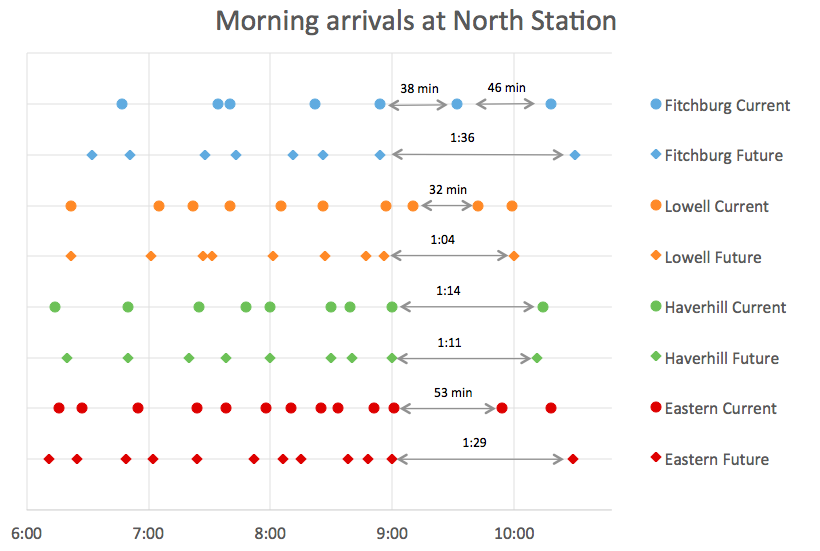The EGE
Senior Member
- Joined
- Jun 29, 2013
- Messages
- 1,763
- Reaction score
- 4,688
Re: Driven By Customer 'Service' Parte Dos
You're absolutely correct - stations have finite capacities, both the number of people you can have at any one time and the number you can fit through the entrances and exits. DTX, Park, and State all have major crowding problems, and solutions are neither easy nor cheap.
If you have good entrances and exits but your platforms are crowded, you need more trains. CBTC (moving-block signal systems) and additional cars carry the promise of more trains, but there are limits. Well-designed CBTC can drop headways to two minutes (30 trains per hour), which London achieves on several of its trunk lines. But that's not necessarily possible in Boston. The Orange Line can actually get down to four minutes (rather than the current six) with its current fixed-block signals; you just need more cars. The Blue Line could add a bit as well. So neither of them have the signalling as a limiting factor. The station-curve-interlocking combo at Harvard (all three of which are very difficult to move) limits minimum headways to about three minutes.
But you can't do that on the Red Line right now, and in fact you don't want to. They took one Red Line train out of service at rush a few years back, and service actually improved! The real problem with the Red Line and Orange Line right now is bunching, which is caused by dwell times. There is not enough platform space to hold everyone, and to get people off the trains before the people on the platform try to cram on. You need wider platforms and more and wider entrances and exits, and those are difficult to come by in downtown Boston. Park Street presents the best opportunity - a new Red Line headhouse from the north end of the platforms - but good luck getting permission to put the headhouse in the middle of the Common.
You're absolutely correct - stations have finite capacities, both the number of people you can have at any one time and the number you can fit through the entrances and exits. DTX, Park, and State all have major crowding problems, and solutions are neither easy nor cheap.
If you have good entrances and exits but your platforms are crowded, you need more trains. CBTC (moving-block signal systems) and additional cars carry the promise of more trains, but there are limits. Well-designed CBTC can drop headways to two minutes (30 trains per hour), which London achieves on several of its trunk lines. But that's not necessarily possible in Boston. The Orange Line can actually get down to four minutes (rather than the current six) with its current fixed-block signals; you just need more cars. The Blue Line could add a bit as well. So neither of them have the signalling as a limiting factor. The station-curve-interlocking combo at Harvard (all three of which are very difficult to move) limits minimum headways to about three minutes.
But you can't do that on the Red Line right now, and in fact you don't want to. They took one Red Line train out of service at rush a few years back, and service actually improved! The real problem with the Red Line and Orange Line right now is bunching, which is caused by dwell times. There is not enough platform space to hold everyone, and to get people off the trains before the people on the platform try to cram on. You need wider platforms and more and wider entrances and exits, and those are difficult to come by in downtown Boston. Park Street presents the best opportunity - a new Red Line headhouse from the north end of the platforms - but good luck getting permission to put the headhouse in the middle of the Common.





